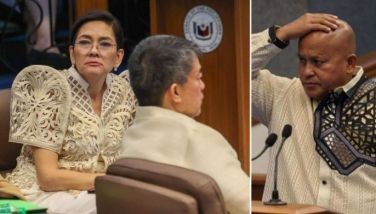Europe and Asia meet in Milan
The dynamic Italian city of Milan often evokes images of fast cars and fashion catwalks but this month it made the front pages for very different reasons. Playing host to the 10th Europe-Asia (ASEM) Summit on 16-17 October, it gathered the leaders of 51 Asian and European leaders who between them represented 60% of the world’s population and the same proportion of its GDP. With President Aquino having just returned from Europe, the Philippines was ably represented by Foreign Secretary Del Rosario who could make his country’s case to the unique ASEM audience.
Asian and European leaders value the opportunity to address their counterparts with formal speeches, but know that it is often the less formal meetings and one-on-one encounters that bear the most fruit. ASEM 10 was structured to provide many such opportunities as well as a retreat where leaders could discuss their common challenges and opportunities in a setting less constrained by protocol. The selected theme was “Responsible Partnership for Sustainable Growth and Strategy” — every word with meaning.
Writing in a joint Op-Ed for the occasion, European Commission President Barroso and European Council President Van Rompuy stated that to their minds “Responsible” meant that both Europe and Asia must tackle regional and global challenges respecting “our joint commitment to international law.” This was reflected in the final Chairman’s Statement where leaders committed “to ensure peace, stability and prosperity and to promote maritime security, safety and cooperation, freedom of navigation and overflight and unimpeded commerce and to combat piracy and armed robbery at sea in full compliance with the principles of international law. Leaders agreed on the critical importance of refraining from the use or threat of force and of disputes being resolved in accordance with principles of international law,including the UN Convention on the Law of the Sea (UNCLOS).”
The ASEM leaders are aware that no truly global challenge can be resolved without the involvement of Asian and European states. Indeed ASEM countries can hold the key to building global consensus on issues like energy security or climate change. It is worth noting that just a few days after ASEM in Milan the member states of the European Union resolved a longstanding debate and announced further drastic cuts in EU carbon emissions. They bound themselves to reduce them to 40% of their 1990 levels by 2030. As a country that bears the brunt of climate change, the Philippines should know that in the EU it has a committed partner determined to make a success of the crucial climate change conference in Paris next year.
But governments hold neither all the answers nor all the tools to deliver results to their citizens. Civil Society, Business and our Parliaments all have a role that is recognized in the ASEM process. Their role is not limited to the parallel events that take place alongside the summits but extends to the programme of activities, projects and initiatives that are pursued by ASEM in all fields of common interest in between the Summits. The Conference on Disaster Risk Reduction and Management that took place in June 2014 in Manila and produced the Tacloban Declaration is one significant example.
Milan was also an opportunity for the European Union and ASEAN, as “Partners in Integration,” to further strengthen their co-operation. At a special EU-ASEAN leaders’ meeting it was apparent just how relations have deepened and broadened in the last two years. Not quite satisfied, European Council President Herman Van Rompuy pressed for an even more “ambitious, more political and more substantial partnership with ASEAN” and proceeded to announce the imminent nomination of the EU’s first Ambassador accredited exclusively to ASEAN.
* * *
(Guy Ledoux is the Ambassador of the European Union.)
- Latest
- Trending






























